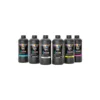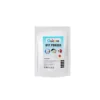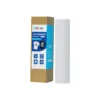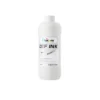What is a Sublimation Printer?
Before diving into whether any printer can use sublimation ink. It’s important to understand what a sublimation printer is and how it works. A printer is specifically designed to use ink, which undergoes a unique transformation during printing.
- Ink Conversion: Sublimation ink is solid at room temperature and requires heat to convert it into a gas.
- Printhead Technology: Sublimation printers use a Micro Piezo printhead, which applies controlled heat to the dye, causing it to vaporize. The gas is then absorbed by the substrate, creating a permanent, high-quality image.
- Substrate Compatibility: This printing method works best with materials that contain polyester or materials with a special coating designed to absorb sublimated dye.
Regular inkjet printers, however, are not designed for this process, and many have thermal printheads, which can’t handle inks.

Can Any Printer Use Sublimation Ink?
Not all printers can use sublimation inks, but it is possible to convert certain inkjet printers for sublimation use. However, several factors play a role in determining whether a printer can handle inks.
- Ink Compatibility:
- Sublimation Ink: Unlike regular inkjet ink, sublimation ink is solid and requires the heat to turn it into gas. Conventional printers are typically designed for liquid ink. Making them incompatible with sublimation ink unless you replace the cartridges with sublimation-compatible ones.
- Thermal Printheads: Most inkjet printers use thermal printheads, which apply heat to liquid ink to create droplets. These thermal printheads are not suitable for sublimation printing as they cannot handle the specific requirements of sublimation ink.
- Printer Model:
- Some printer models, especially Epson inkjet printers, can be successfully converted for sublimation printing. These printers feature a Micro Piezo printhead, which can handle the gaseous transformation of sublimation ink.
- In contrast, brands like HP, Canon, Dell, and Lexmark generally use thermal printheads, making them unsuitable for sublimation ink.

How to Convert a Printer to Sublimation
- Replace the Ink Cartridges: To use sublimation inks, you’ll need to replace the standard inks cartridges with sublimation-compatible cartridges designed for your printer model.
- Use Sublimation Paper: Sublimation printing requires special paper that has a coating to help transfer the inks during the heating process.
- Use Heat Press: A heat press is essential for transferring the sublimated ink onto the substrate. It applies the necessary heat and pressure to activate the sublimation process.


Why Regular Printers Can’t Use Sublimation Ink
Even if you replace the inks with sublimation inks. There are still several inherent limitations that prevent regular printers from being suitable for sublimation printing.
- Heat Requirements: Sublimation printing requires a specific level of heat to activate the inks. Standard printers don’t have the required heating elements, as they rely on thermal printheads designed for liquid ink.
- Substrate Compatibility: Regular printers are designed to handle paper, not specialized substrates that require sublimation, such as polyester fabric or coated ceramics. Using these materials with a standard printer could lead to poor results or damage to the printer.
- Ink Delivery Mechanism: Printers not designed for sublimation typically lack the precise control needed to ensure the proper delivery of sublimation inks, which is crucial for achieving high-quality results.
Sublimation inks have some paper requirements in addition to printer requirements. See also: Can You Use Regular Paper With Sublimation Ink?

Conclusion
While it is possible to convert certain printers (mainly select Epson inkjets) to handle sublimation inks, not every printer is suited for this task. Regular printers, particularly those from brands like HP, Canon, and Lexmark, generally aren’t compatible with sublimation inks due to their thermal printheads and lack of required heating mechanisms.
For the best results, it’s recommended to use a dedicated sublimation printer or convert an inkjet printer that supports sublimation, such as certain Epson models. Additionally, make sure to replace the ink, use the correct sublimation paper, and invest in a heat press to ensure the proper transfer of your designs onto your chosen substrates.








